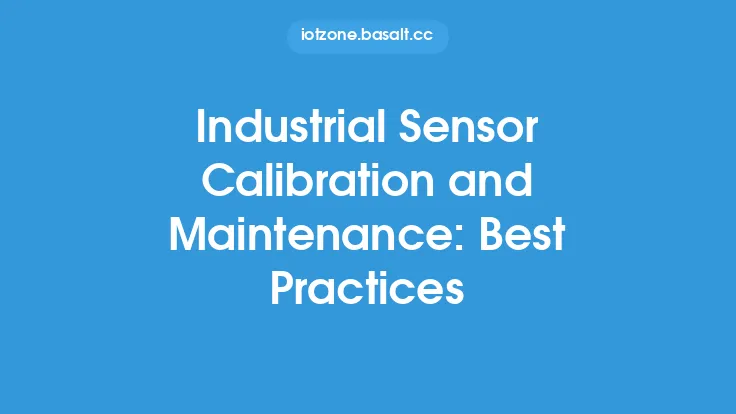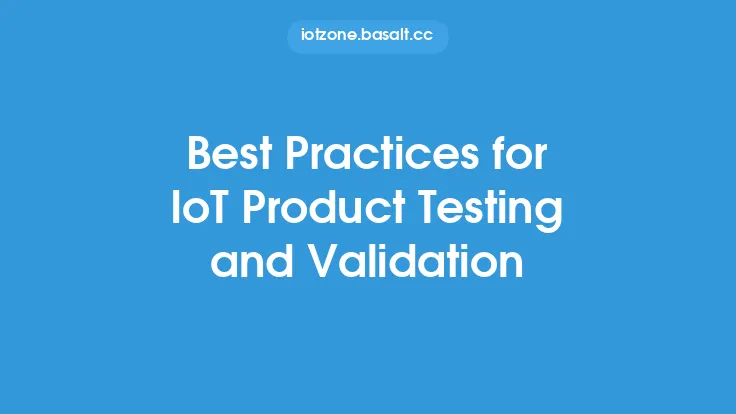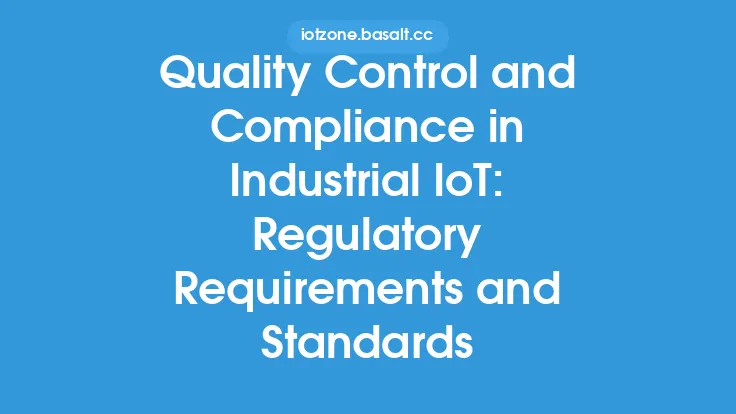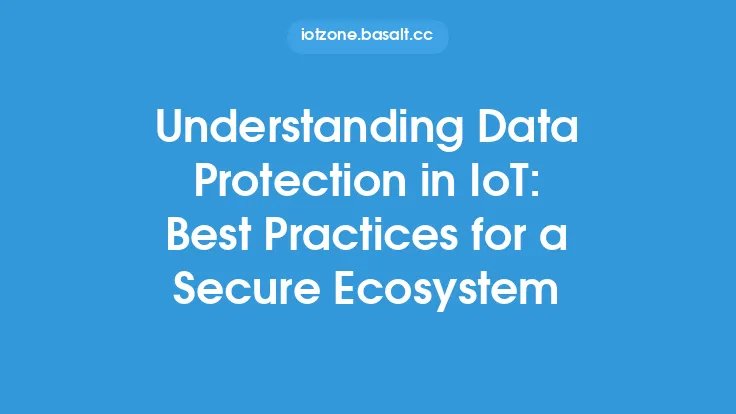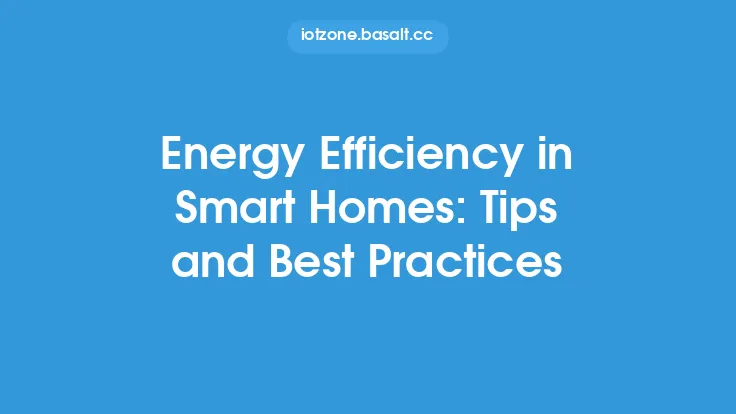The Internet of Things (IoT) has revolutionized the way we live and work, with billions of connected devices collecting and exchanging data. However, this increased connectivity also introduces new security risks and compliance challenges. As IoT devices become more pervasive, organizations must navigate a complex landscape of standards and best practices to ensure compliance with regulatory requirements. In this article, we will delve into the world of IoT compliance, exploring the key standards, regulations, and best practices that organizations must adhere to.
Introduction to IoT Compliance
IoT compliance refers to the process of ensuring that IoT devices, systems, and data meet the required standards and regulations. This involves implementing security controls, data protection measures, and other safeguards to prevent unauthorized access, data breaches, and other security threats. IoT compliance is critical for organizations that develop, manufacture, or use IoT devices, as non-compliance can result in significant fines, reputational damage, and legal liabilities.
Key IoT Compliance Standards
Several standards and regulations govern IoT compliance, including:
- ISO/IEC 27001: An international standard for information security management systems (ISMS) that provides a framework for managing and protecting sensitive data.
- NIST Cybersecurity Framework: A widely adopted framework that provides guidelines for managing and reducing cybersecurity risk.
- IEEE 802.1x: A standard for port-based network access control that provides a framework for securing IoT devices and networks.
- ETSI TS 103 645: A European standard for cybersecurity in IoT that provides guidelines for secure design, development, and deployment of IoT devices.
- UL 2900: A standard for cybersecurity in IoT devices that provides guidelines for secure design, development, and testing of IoT devices.
Regulatory Requirements for IoT Compliance
In addition to industry standards, organizations must also comply with regulatory requirements, including:
- General Data Protection Regulation (GDPR): A European regulation that governs the collection, storage, and processing of personal data.
- Health Insurance Portability and Accountability Act (HIPAA): A US regulation that governs the protection of sensitive healthcare data.
- Federal Information Security Management Act (FISMA): A US regulation that governs the security of federal information systems.
- California Consumer Privacy Act (CCPA): A US regulation that governs the collection, storage, and processing of personal data in California.
Best Practices for IoT Compliance
To ensure compliance with IoT standards and regulations, organizations should follow best practices, including:
- Conducting risk assessments: Identifying potential security risks and vulnerabilities in IoT devices and systems.
- Implementing secure design principles: Designing IoT devices and systems with security in mind, including secure coding practices, secure data storage, and secure communication protocols.
- Using secure communication protocols: Using secure communication protocols, such as TLS and DTLS, to protect data in transit.
- Implementing access controls: Implementing access controls, such as authentication and authorization, to prevent unauthorized access to IoT devices and systems.
- Monitoring and incident response: Monitoring IoT devices and systems for security incidents and having an incident response plan in place to respond to security breaches.
Technical Requirements for IoT Compliance
To ensure compliance with IoT standards and regulations, organizations must also meet technical requirements, including:
- Secure boot mechanisms: Implementing secure boot mechanisms to prevent unauthorized software from running on IoT devices.
- Secure firmware updates: Implementing secure firmware update mechanisms to prevent unauthorized firmware updates.
- Secure data storage: Implementing secure data storage mechanisms, such as encryption, to protect sensitive data.
- Secure communication protocols: Implementing secure communication protocols, such as TLS and DTLS, to protect data in transit.
- Penetration testing and vulnerability assessment: Conducting regular penetration testing and vulnerability assessments to identify potential security vulnerabilities.
Challenges and Opportunities in IoT Compliance
IoT compliance presents several challenges, including:
- Complexity: IoT compliance involves navigating a complex landscape of standards, regulations, and technical requirements.
- Cost: Implementing IoT compliance measures can be costly, particularly for small and medium-sized enterprises.
- Limited resources: Small and medium-sized enterprises may have limited resources, including personnel and budget, to devote to IoT compliance.
However, IoT compliance also presents opportunities, including:
- Improved security: Implementing IoT compliance measures can improve the security of IoT devices and systems, reducing the risk of security breaches and cyber attacks.
- Increased trust: Demonstrating compliance with IoT standards and regulations can increase trust among customers, partners, and stakeholders.
- Competitive advantage: Organizations that demonstrate compliance with IoT standards and regulations can gain a competitive advantage in the market.
Conclusion
IoT compliance is a critical aspect of IoT security, involving the implementation of security controls, data protection measures, and other safeguards to prevent unauthorized access, data breaches, and other security threats. By understanding the key standards, regulations, and best practices for IoT compliance, organizations can navigate the complex landscape of IoT compliance and ensure the security and integrity of their IoT devices and systems. While IoT compliance presents several challenges, it also presents opportunities for improved security, increased trust, and competitive advantage. As the IoT continues to evolve and grow, the importance of IoT compliance will only continue to increase, making it essential for organizations to prioritize IoT compliance and stay ahead of the curve.
